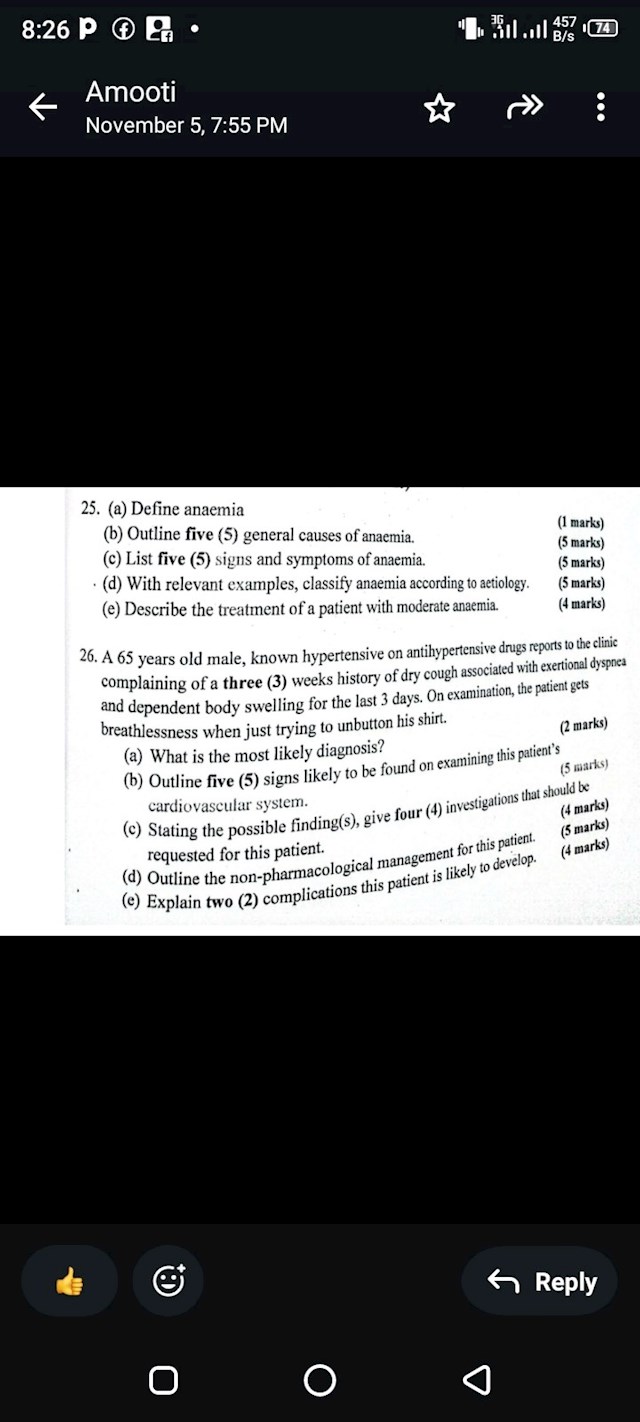Anonymous
Nov 9, 2024
Characteristics of bronchiolitis in children:
1 view
1 view
3 answers
Sort By

ChatGPT
Nov 9, 2024
1. Bronchiolitis is a common respiratory infection in young children, typically affecting infants under the age of 2.
2. It is usually caused by a viral infection, most commonly respiratory syncytial virus (RSV), but can also be caused by other viruses such as adenovirus, influenza, and parainfluenza.
3. Symptoms of bronchiolitis include coughing, wheezing, difficulty breathing, rapid breathing, nasal congestion, and fever.
4. The illness typically starts with symptoms similar to a common cold, such as a runny nose and mild cough, before progressing to more severe respiratory symptoms.
5. Bronchiolitis can lead to difficulty breathing, especially in infants with smaller airways, and may require hospitalization for supportive care such as oxygen therapy.
6. Treatment for bronchiolitis is usually supportive, including ensuring adequate hydration, using a cool mist humidifier, and administering fever-reducing medications if needed.
7. Most cases of bronchiolitis resolve on their own within a week to 10 days, but some children may develop complications such as pneumonia or respiratory failure.
8. Children at higher risk for severe bronchiolitis include premature infants, infants with underlying medical conditions such as heart or lung disease, and infants exposed to secondhand smoke.
2. It is usually caused by a viral infection, most commonly respiratory syncytial virus (RSV), but can also be caused by other viruses such as adenovirus, influenza, and parainfluenza.
3. Symptoms of bronchiolitis include coughing, wheezing, difficulty breathing, rapid breathing, nasal congestion, and fever.
4. The illness typically starts with symptoms similar to a common cold, such as a runny nose and mild cough, before progressing to more severe respiratory symptoms.
5. Bronchiolitis can lead to difficulty breathing, especially in infants with smaller airways, and may require hospitalization for supportive care such as oxygen therapy.
6. Treatment for bronchiolitis is usually supportive, including ensuring adequate hydration, using a cool mist humidifier, and administering fever-reducing medications if needed.
7. Most cases of bronchiolitis resolve on their own within a week to 10 days, but some children may develop complications such as pneumonia or respiratory failure.
8. Children at higher risk for severe bronchiolitis include premature infants, infants with underlying medical conditions such as heart or lung disease, and infants exposed to secondhand smoke.
0

Google Gemini AI
Nov 9, 2024
- Age: Usually occurs in infants and young children under 2 years of age.
- Symptoms:
- Wheezing
- Cough
- Difficulty breathing, especially during feeding or sleep
- Rapid breathing
- Nasal congestion
- Fever
- Irritability
- Signs:
- Decreased breath sounds
- Wheezes
- Prolonged expiratory phase
- Tachypnea (rapid breathing)
- Tachycardia (fast heart rate)
- Subcostal retractions (indrawing of the muscles below the ribs)
- Cyanosis (bluish tint to the skin, lips, or nail beds) in severe cases
- Causes:
- Respiratory syncytial virus (RSV) is the most common cause, but other viruses, bacteria, and allergies can also trigger bronchiolitis.
- Diagnosis:
- Based on symptoms, signs, and chest X-ray if needed.
- Treatment:
- Supportive care, such as oxygen therapy, suctioning, and hydration
- Bronchodilators (medications that open the airways) may be prescribed in some cases
- Antibiotics are not typically needed unless there is a bacterial infection
- Prevention:
- Washing hands frequently
- Covering mouth and nose when coughing or sneezing
- Avoiding contact with sick individuals
- RSV prophylaxis for high-risk infants
- Symptoms:
- Wheezing
- Cough
- Difficulty breathing, especially during feeding or sleep
- Rapid breathing
- Nasal congestion
- Fever
- Irritability
- Signs:
- Decreased breath sounds
- Wheezes
- Prolonged expiratory phase
- Tachypnea (rapid breathing)
- Tachycardia (fast heart rate)
- Subcostal retractions (indrawing of the muscles below the ribs)
- Cyanosis (bluish tint to the skin, lips, or nail beds) in severe cases
- Causes:
- Respiratory syncytial virus (RSV) is the most common cause, but other viruses, bacteria, and allergies can also trigger bronchiolitis.
- Diagnosis:
- Based on symptoms, signs, and chest X-ray if needed.
- Treatment:
- Supportive care, such as oxygen therapy, suctioning, and hydration
- Bronchodilators (medications that open the airways) may be prescribed in some cases
- Antibiotics are not typically needed unless there is a bacterial infection
- Prevention:
- Washing hands frequently
- Covering mouth and nose when coughing or sneezing
- Avoiding contact with sick individuals
- RSV prophylaxis for high-risk infants
0
Anonymous
Nov 9, 2024

Answer the following questions
0